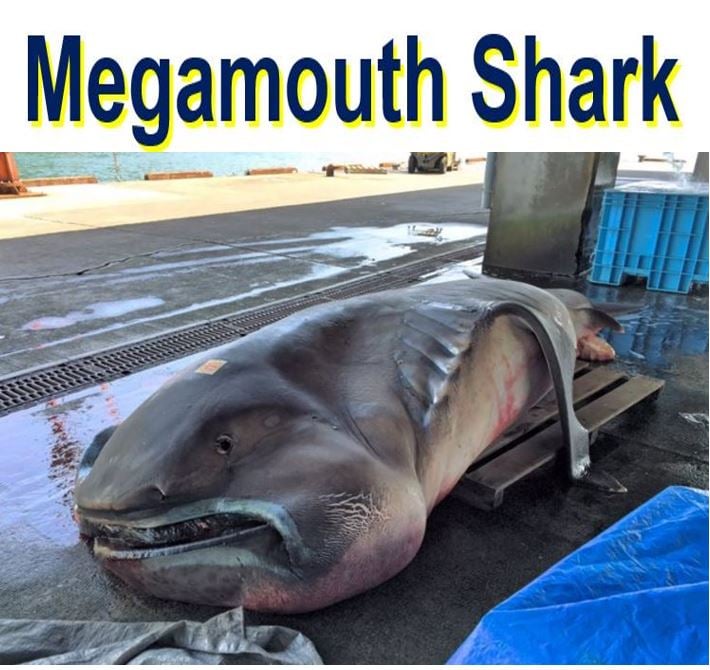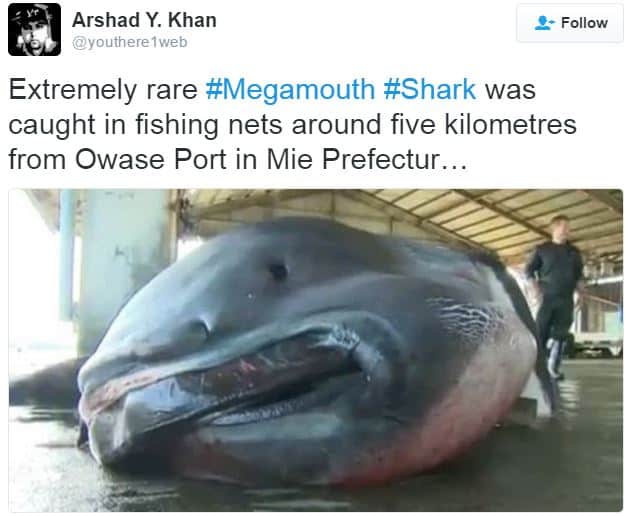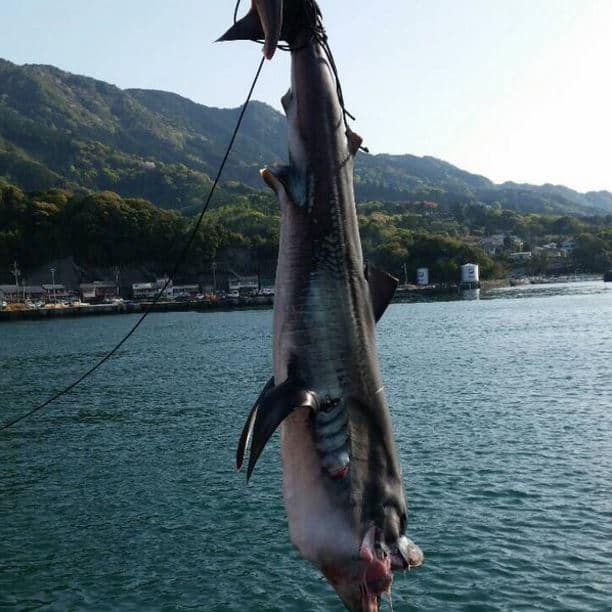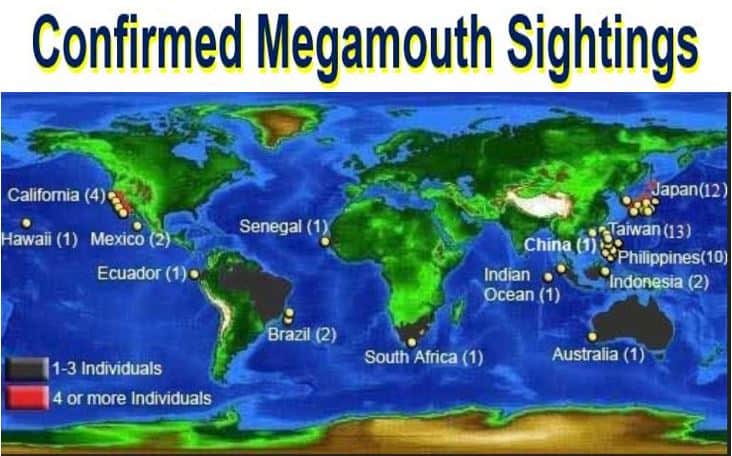An extremely rare Megamouth Shark (Megachasma pelagios) has been caught off the coast of Japan by fishermen. The deepwater shark got caught in fishing nets about 3 miles (5 kilometres) from Owase Port (尾鷲市) in the Mie Prefecture, southeastern Kii Peninsula in central Japan.
The five-metre (16.4 ft) long creature, the smallest of the three extant planktivorous sharks, weighed 907 kg (2,000 pounds) and was purchased by a local fishmonger.
We first knew about this shark’s existence in 1976. Since then, only sixty-one specimens have been reported – caught or sighted. During the early years, many people thought the sightings were hoaxes.
 This megamouth shark, weighing nearly one ton, got caught in a fishing net off the coast of Japan. (Image: twitter.com/louoly_o0)
This megamouth shark, weighing nearly one ton, got caught in a fishing net off the coast of Japan. (Image: twitter.com/louoly_o0)
Like its two other filter feeder cousins, the Megamouth Shark swims with its massive mouth wide open, filtering water for jellyfish and plankton.
It is has an unusual appearance – a huge mouth, rubbery lips and a large head.
It is so different from any other type of shark that it is commonly considered to be the sole existing species in the distinct family Megachasmidae. Some scientists have suggested that it could belong to the family Cetorhinidae, of which the basking shark is today the sole surviving member.
The Megamouth is a poor swimmer, compared to other sharks. It has a soft, flabby body and lacks caudal keels (lateral ridges found just forward of the tail fin). It is significantly less active than other filter-feeding sharks, the whale shark and the basking shark.
 In this picture posted by Mr. Khan on Twitter, one can appreciate its size, compared to the man standing behind. (Image: twitter.com/youthere1web)
In this picture posted by Mr. Khan on Twitter, one can appreciate its size, compared to the man standing behind. (Image: twitter.com/youthere1web)
It has a stout body with a long, very wide bulbous head. In the world of sharks it is among the larger species, and can grow to 18 feet (5.5 metres) in length and weigh up to 1,315 kg (2,697 pounds).
As their name suggests, Megamouths have an enormous mouth – which can reach up to 1.3 metres (4 ft 3 in) wide – with small teeth, a broad, rounded snout. Observers commonly mistake it for a young orca (killer whale).
Its mouth is surrounded by luminous photoophores (light-emitting organs which appear as luminous spots). These photophores probably act as a lure for plankton and possibly also small fish.
A 4.9 metre (14 foot) long male Megamouth was caught near the surface in California in 1990. Scientists who wanted to monitor it, attached a small radio tag to its soft body and released the fish.
Over a two-day period, the tag relayed data on the its swimming habits; specifically, how deep it would swim and when.
 According to Tracking Sharks, the Megamouth shark was unintentionally netted and has reportedly been sold at a fish market. This is the 61st known specimen to have been caught or observed. One was found in 2015, and two in 2014. (Image: twitter.com/louoly_o0)
According to Tracking Sharks, the Megamouth shark was unintentionally netted and has reportedly been sold at a fish market. This is the 61st known specimen to have been caught or observed. One was found in 2015, and two in 2014. (Image: twitter.com/louoly_o0)
They reported that during the day, the shark swam to a depth of about 120 to 160 metres (390 to 520 ft). However, during sunset it would come back up and settle at depths of between 12 and 25 metres (39 to 82 feet) during the night.
Its progress was found to be very slow during both day and night times – about 0.93 to 1.3 mpg (1.5 to 2.1 km/h).
This pattern of going deep down during the day and coming nearer to the surface at night has been reported in many marine animals, especially those that pursue plankton.
 There have probably been more Megamouth sightings than the official figures. It is such a large shark, making it hard to handle, that many have probably been returned to the sea by their captors. (Image: Florida Museum of Natural History)
There have probably been more Megamouth sightings than the official figures. It is such a large shark, making it hard to handle, that many have probably been returned to the sea by their captors. (Image: Florida Museum of Natural History)
According to the Florida Museum of Natural History:
“This rare and unusual shark has been knowingly encountered so few times that the scientific community has a list and extensive notes on each shark encountered. Due to the lack of information concerning distribution and population status, the megamouth is considered “Data Deficient” by the World Conservation Union (IUCN).”
“Although only 63 confirmed sightings of megamouth shark are reported, this species is now known from Indian, Pacific and Atlantic Oceans.”
Video – Megamouth shark caught off Japanese coast
In this (silent) CNN News video, you can see images of the Megamouth shark that was caught off the coast of Japan earlier this week.

